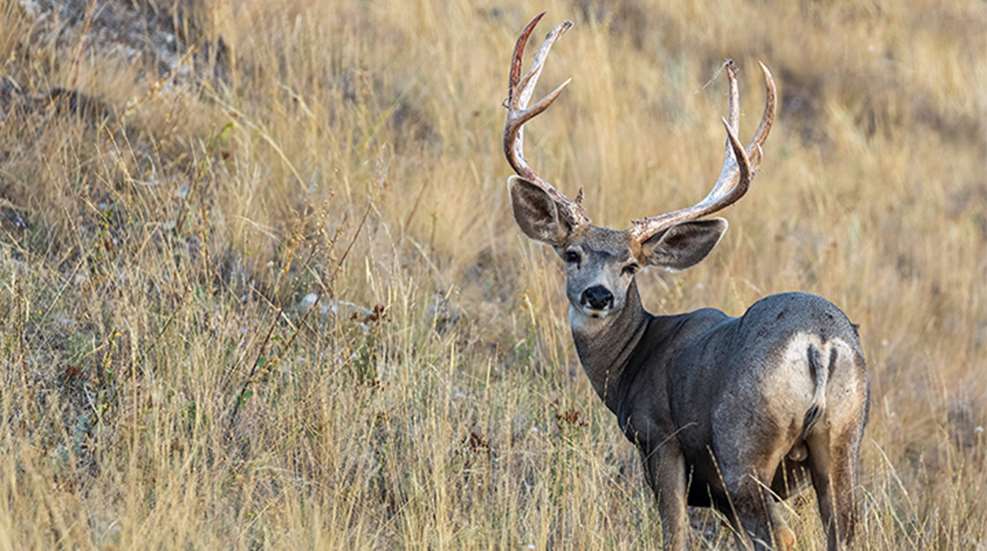
After some four hours of hiking West Texas draws and slopes that morning, we spotted the mule deer buck in scrubby junipers two ridgelines over, moving but in no real hurry. I couldn’t get my binocular up fast enough before the buck disappeared behind a wall of green, but my guide, Trey Archer, had glass on the animal almost immediately.
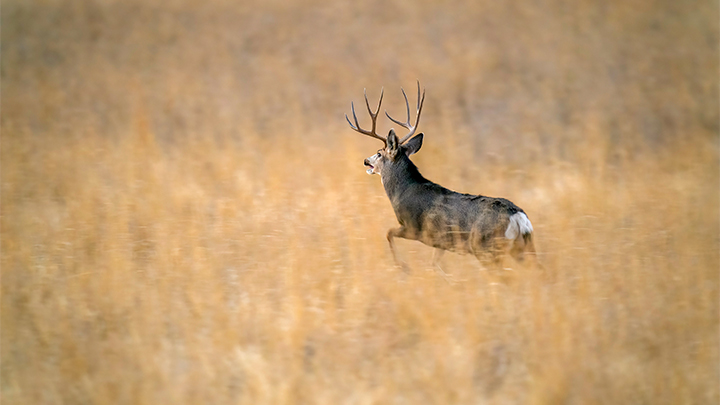
“Shooter?” I asked.
“He’s a good deer,” Archer said, and looked me in the eyes. “You want to try him?”
“That’s the plan,” I replied.
A trio of mule deer does popped out of the brush near where the buck had vanished, and drifted along the ridgeline, browsing as they went. The mule deer rut had just started here, in early December near Rotan, Texas. If we were lucky the does would stay on that ridge and the buck would be interested enough to hang around.
Time to hike.
Archer and I climbed the first rocky slope, got to the top and glassed for a second. Does were still visible several hundred yards away. No sign of Mr. Buck.
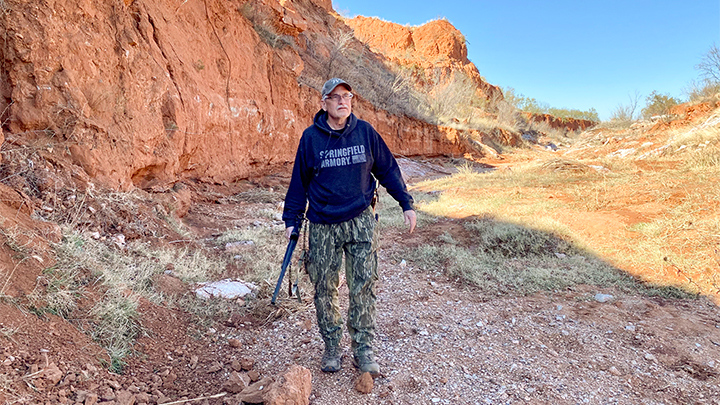
We headed downslope, moved through a tangle of leafless mesquite and came to a steep-sided gully right across our path. With Archer in the lead and me five yards behind, I slung my Springfield Model 2020 Waypoint across my back so I could use my arms for better balance. It didn’t help. I was halfway down a gravely path when my feet went out from under me, and I crashed right onto my back then slid a few feet until I got my heels dug into the rocks and sand. Archer helped me up, asked if I was okay. Yes, but I was somewhat embarrassed. I unslung my rifle and looked it over: a couple of small scratches on the stock. But my Leupold VX-3HD 3.5-10x40 scope had taken a good beating. A couple of deep scratches on the objective bell showed the tube’s bright aluminum.
Well, there was nothing I could do now but hope the scope was still zeroed. Damn.
Archer and I made our way to the far end of the mule deer’s ridge then took our time climbing the soft sand slope. At the top, we stood a couple of hundred yards back from where the buck stood when first spotted. If he’d continued on his way, he was now somewhere along the ridgeline with those three does, among the boulders, the bare mesquite and the junipers.
We glassed then started to move along the ridgeline, slowly, avoiding dead branches on the ground and the many clumps of prickly pear. We got to a formation of weathered rock nearly as tall as ourselves and prepared to stop to glass. Instead, we froze. A mule deer doe stood not 50 yards away, looking right at us.
■ ■ ■
We spotted that ridgeline buck on day four of my muley hunt at Hargrove Hunts, a 40,000-acre cattle ranch and hunting operation. I’d been here in the spring on a Rio turkey hunt, when Craig Archer, Hargrove’s hunting manager, mentioned the mule deer the ranch held.
“This far east?” I asked. The ranch lay an hour north and west of Abilene.
“Our muley numbers have been growing steadily over the last eight, 10 years,” he told me. “They really like the open habitat on the southern side of the ranch, the canyons and gullies.”
That got me thinking and, later, researching.
Historically, mule deer range likely just touched the Rotan area of West Texas, according to Shawn Gray, mule deer and pronghorn program leader for Texas Parks and Wildlife Department (TPWD). But about 50 years ago, you probably would’ve had a tough time finding one here, and certainly not farther east, as mule deer numbers in Texas were in a noticeable decline at the time.
Yet mule deer appear to be doing quite well in this part of the world. People in the Aspermont area some 35 miles east of the Hargrove Ranch tell me of mule deer they see, and a hunting manager friend an hour-and-a-half’s drive northeast of Rotan recently discovered a pocket of mule deer on his ranch, too.
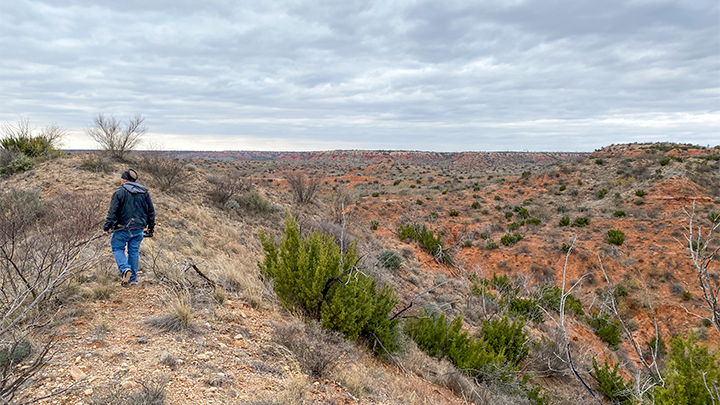
“I think it’s a combination of past mule deer relocations, and better brush and deer management that has mule deer numbers growing in this part of Texas,” Gray told me.
Muleys prefer more wide-open habitat than their whitetail cousins, he noted, and they shy away from areas choked with brush. Ranchers and other landowners who cut back the brush and the tangles of mesquite for agricultural and hunting management actually open up the land in ways that benefit the muleys. Plus, TPWD moved some 1,500 mule deer from the far western Trans-Pecos region of Texas to the Panhandle region from the 1960s into the 1990s. Gray suspected that as Panhandle numbers grew, mule deer dispersed somewhat east and south.
All of this meant I had to get back to Hargrove and hunt these eastern-edge muleys.
With significant help from Springfield Armory, I returned to Hargrove in early December 2020 to try an eastern edge muley hunt. I took along a Springfield Waypoint 2020 bolt-action chambered in 6.5 Creedmoor; early on, it proved itself a solid hunting rifle, taking several hogs and two aoudads on ranch property.
Trey Archer (Craig’s nephew) and I had spotted two mule deer bucks during the course of our hiking and climbing the canyons and mesas. But that first buck stood a hundred yards over onto the next ranch. The second guy jumped a fence line, and we weren’t sure if he was still on Hargrove property or not. Turned out he was, and I could’ve taken him. We went back to that area a couple of times, but the buck was not to be seen.
■ ■ ■
West Texas in early winter is an amazing place. The red rock canyons opened wide before us, their slopes of broken stone and sand strewn with dull green cactus and leafless clumps of mesquite with gray branches twisting into the air like arthritic fingers. In places, the vistas were so immense, with blue sky and juniper-fringed ridges reaching into those skies, I got lost just looking and wondering how anything could be so huge, trying to take in all of it and failing. In these moments, I felt like a tiny speck in the great whole and yet a part of that whole, too, tied to it.
The mornings started off cold, often 30 degrees Fahrenheit or below. We had two overcast, windy days where it didn’t break 50, and I’d wished I’d packed a heavier jacket. The other days saw me sweating before noon and peeling off layers.
The morning we found that muley buck on the ridge it was all of 26 degrees according to the dashboard read-out on Trey’s pickup truck. But he told me not to worry. “It will be even colder down in the gullies!” he said, laughing.
■ ■ ■
In the afternoon of day three, Trey and I headed to the very southwest corner of the ranch, home to several dozen free-range aoudad. Craig Archer gave me the green light to take any I spotted. My mule deer hunt was paid for but the aoudad was not, so I asked him the price.
“Their numbers are getting to be a problem and they’re definitely competing with the deer at this point.” He grinned. “No charge.”
Trey and I spotted a small herd of the exotic African sheep a little before dark, grazing on a red rock slope about 200 yards away. My first shot took down a large ewe, and the rest began running. A couple shots later and I dropped a second aoudad ewe before the others disappeared over the hill.
At that point, the hunt had been a huge success, with coyotes and hogs and now aoudad taken. But, of course, I was there for a muley buck.
“Time for us to get serious,” Trey said as we drove back to the hunting lodge that night, the pair of aoudads in the back of the side-by-side. “Two days left.”
“I’ve been serious,” I said.
“I think we need to do lots more walking from here on,” he said.
“Of course we do,” I said, thinking he was 25 years my junior and more walking was what all young hunters yearned for. But this not-so-young hunter was ready for whatever the next two days would require.
■ ■ ■
The muley doe wasn’t scared of us, more curious than anything, her long ears twitching a bit as she looked us over. Trey and I stood statue-still for at least two minutes, until she turned away and faded into the junipers.
Trey pulled out the legs on the shooting sticks he carried, and I tried them out for height. Our plan was simple enough: Ease down this ridge, spot the buck and then it was up to me to make the shot. But we had to move slowly, quietly. Of course, our slow might put the buck out of reach if he decided to go fast. I just hoped he had enough interest in the three does to give us a chance.
We weaved our way among the junipers and boulders and clumps of prickly pear cactus. The sun was bright, and the temperature had to be at 60 now, I figured. I wished I hadn’t worn my base layers. After what seemed an eternity plus half another one, we saw patches of brown drifting through the junipers. Trey moved his hand to the left and down, signaling what he thought the buck had done: It had stepped below the ridgeline to the left and now was keeping parallel to the does. So, we slid left and down and continued our stalk. But all I saw was rock and juniper.
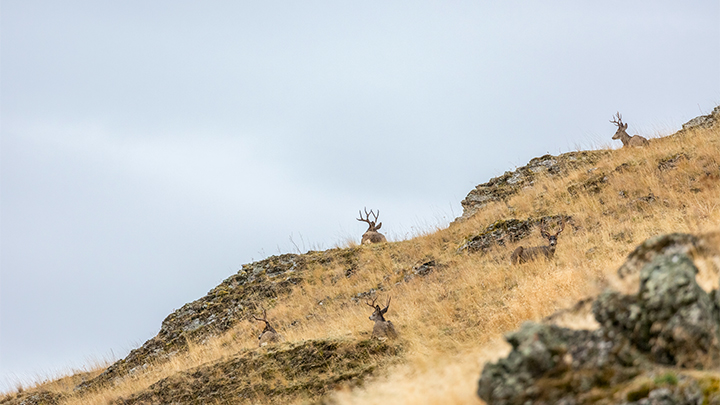
I was sure the buck had split for ridges unknown when Trey whispered sharply to get my attention. He pointed to the right and ahead, and I glimpsed the shoulders of the buck glide through the trees more than 100 yards away.
We walked forward as fast as we could without making too much noise. Trey set up the shooting sticks every 30 yards or so, and I’d set up the Waypoint and scan through the scope. I saw a lot of muley rear ends, the buck and the does comingling, and once I spotted the buck's antlers. But they kept moving, not far away but never presenting a shot.
We hiked on, my heart beating in my ears.
One of the muley does, I believe, knew they were being tailed and moved ahead accordingly. But the buck had not seen us, and the slight breeze was in our faces. On and on the ridgeline seemed to go, Trey and I catching quick sights of the buck, maddeningly near, now far.
A relatively open and elongated space appeared ahead. The buck had slid all the way through the opening, but stopped at the far edge and looked around, searching for the does. I got the Waypoint onto the sticks, lined up the reticle on his left ribs and was just starting to tighten my finger when he ducked into the brush.
Trey and I quickly skirted the opening along its left edge, got into the cover and set up the sticks. I got on them, scanned and scanned and then I spotted the buck’s antlers, his neck blocked by a mesquite branch but his left side exposed. He wasn’t 50 yards away, and I shot quickly.
The buck jumped and I knew he was hit, but that didn’t stop him from running.
“I think I took him farther back than I should have,” I said, my post-shot jitters starting.
“Maybe,” Trey said. “But he’s hurt. He’s not going far.”
After 10 minutes, Trey and I got to the spot where I’d hit the buck and found a scattering of blood. We followed more blood, tracks and then … nothing.
That empty feeling spread through my gut. I was sure I’d pulled the shot. But a couple anxious minutes later we found my muley spread out under a cedar, dead. My shot had taken him back as I’d figured, but the bullet came in at the rear of his ribcage. He must’ve twisted just before I squeezed the trigger, and the 6.5 Creedmoor Winchester Ballistic Silvertip smashed though his right lung and into the far shoulder. It was my first and only eastern-edge mule deer.
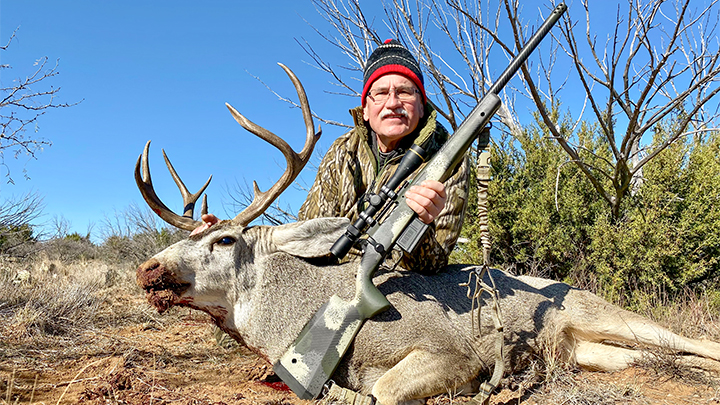
“Good job!” Trey said, as he let out a whoop of joy.
A chill went through my body. I suddenly realized, as that West Texas wind washed over me, that my clothing was sweated through, but I forced myself to breathe deep.
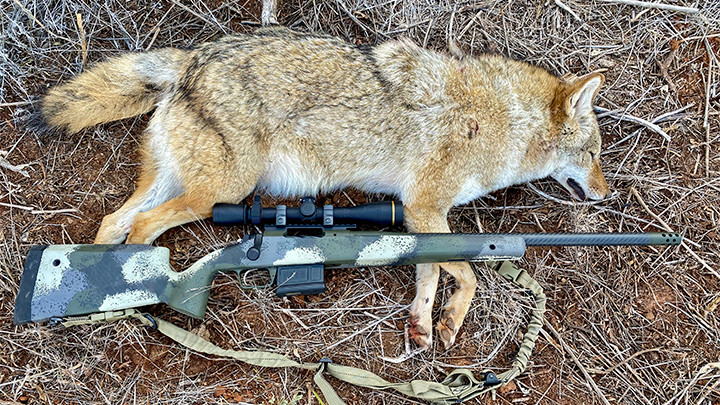
The West Texas Setup
Springfield Armory hit a two-run homer with the Model 2020 Waypoint. Lightweight and accurate, it’s a great hunting rifle, with a fine trigger and a box-magazine feed system. I used the model with the carbon-fiber-wrapped barrel, but the rifle is offered with a stainless-steel barrel, too. MSRP: $1,699; springfield-armory.com.
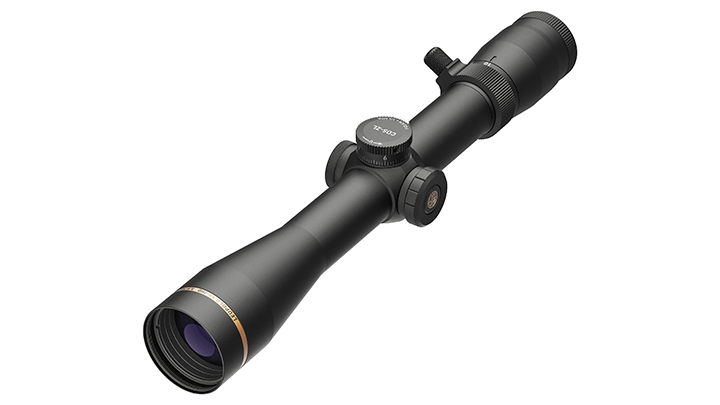
I tricked out my Leupold VX-3HD 3.5-10x40 with a Leupold CDS turret made specifically for my Winchester 6.5 Creedmoor rounds. The scope features precise controls and pulls in lots of light. It is rugged, too. It held zero even after I and my 200 pounds fell backwards onto it! MSRP: $499; leupold.com.
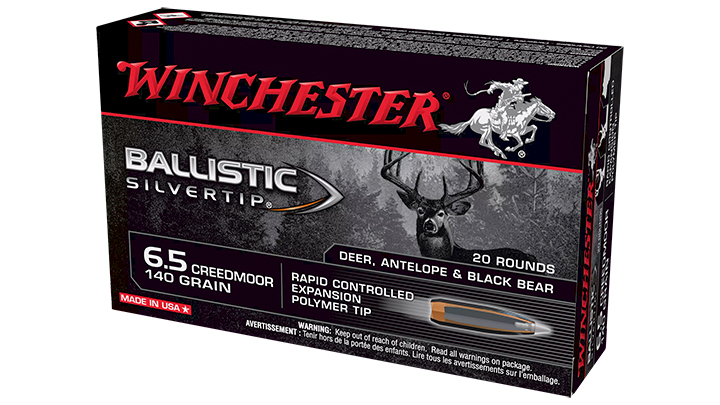
Winchester’s new 6.5 Creedmoor Ballistic Silvertip ammunition launches a 140-grain poly-tipped bullet that starts expanding a few inches into an animal yet holds together for the whole journey, retaining almost all of its weight. It’s damned accurate, too. MSRP: $39.99 per 20-rnd. box; winchester.com.
I wore clothing in Mossy Oak’s Bottomland camouflage pattern. Red rock canyons aside, much of the landscape was rocky, the vegetation dull green; the Bottomland blended in absolutely fine. My jacket, pants and vest were made by Paramount Outdoors and were cut generously for the kind of movement the active hunter needs.




































